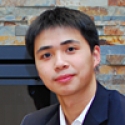What Makes A Shen Yun Performance Possible?
A glimpse of the invisible: “quick change,” mo qi, and divinely bestowed culture
I’ve found that many people who watch Shen Yun are amazed at how quickly we change costumes between dances, how perfectly synchronized we can be, and how live music and high-tech digital backdrop can seamlessly complement what's happening on stage. It obviously involves countless hours of training and rehearsal, but that’s just part of the story. Here I'm about to provide a glimpse of what happens behind the scenes.
Quick Change
Audience members sometimes have a hard time believing how quickly we change from one outfit to another. We might appear on stage as Buddhas one moment, warriors the next, and then eccentric characters from Journey to the West. So how do we “pull it off?”
Let’s just say, thorough preparation is a must—everything has to be in the right place. Then there's training—learning the quickest ways to change and perfecting it down to the millisecond. The method of changing is a skill worthy of practice, in and of itself. After numerous repetitions, the process becomes second nature.
Finally, quick change heavily depends on everyone's cooperation as we all have to assist each other. There's also a special phenomenon called… the "extreme quick change." This is when we have to change into a completely different costume during a dance. Cooperation is even more important in this case—we really must rely on one another to get the job done swiftly.
Mo Qi Anyone?
On stage we have a different kind of cooperation—it’s called mo qi (默契) or tacit understanding. Perhaps it sounds to some Westerners a little like mochi, the Japanese sticky rice cakes. Mo qi is a different word, but you could say it's also kind of like an invisible glue. To us, it’s a skill wherein we are constantly aware of one another on stage, and we can even anticipate each other’s movements, positions, and timings. It's a kind of synergy that keeps our movements in sync and prevents us from unintentionally crashing. The prerequisite is that each of us has a deep, mutual understanding of one another—something we have gradually developed in our countless hours of practice and rehearsals together.
Actually, our cooperation isn’t just limited to the stage—we’re always working together, whether it be in professional or casual settings. For example, even after we finish the last show at a theatre, everyone—from our principal dancers to our bus drivers—takes part in “striking” the stage. As a result, we’re able to load out in about an hour, which is unbelievable to the local theatre crews. One stagehand remarked that our process runs "like a well-oiled machine."
But why is it that we can cooperate so well? In fact, what’s been described so far is only on the superficial level, whereas the real driving force is something that goes much deeper.
Reviving Divinely Inspired Culture
Shen Yun’s mission is to revive 5,000 years of divinely inspired Chinese culture. “Divinely inspired” refers to the deeper spiritual core that is at the heart of fundamental Chinese values and beliefs, such as the cardinal values of benevolence, honor, propriety, wisdom, and sincerity. However, we believe that these are universal values that should be shared with all people.
To us, the performance isn’t a job nor simply a form of entertainment (although Chinese classical dance can be really cool). We perform not for ourselves but for our audience. It is our hope that after watching a Shen Yun performance, people will leave with positive messages and a new outlook on life. In order to do that we need to ensure that every show is perfect, and that is largely dependent on our ability to cooperate as a whole, from the stage performers to the orchestra to the digital backdrop.
To cooperate well on stage, we also need to be able to work together offstage. Thus, everyone strives to exercise positive values in everyday life and improve moral character. For example, we always try to consider others first, whether it be helping someone carry luggage or taking initiative to help load the truck. We try to treat everyone with kindness and respect. We strive to be honest and compassionate people who encourage one another in times of hardship and rejoice in times of success.
The results are manifold. One is the embodiment of traditional values in our everyday lives, which allows us to naturally present these qualities on stage. Another is that we become a tightly knit group, each of us a part of the whole, with everyone doing his or her part to ensure a complete success. We're like a tightly clenched fist, so our shows can really pack a punch.
And actually, this reminds me of one of our most popular dances, Chopstick Zest (2008), in which Mongolian men prance on wide open plains with a thick chopstick bundle in each hand. As the emcees explain to the audience, "A single chopstick is easier to break than a bunch—hence people need to pool their efforts together!"
All our efforts are focused on fulfilling Shen Yun’s mission to revive China’s genuine divinely inspired culture. By developing a strong moral character, we’re able to cooperate well both on and off the stage. And when we receive standing ovations at the final curtain call, I feel the audience truly understands our message, and that’s encouragement to keep pushing through every performance.

Gary Liu
Dancer
April 23, 2013






